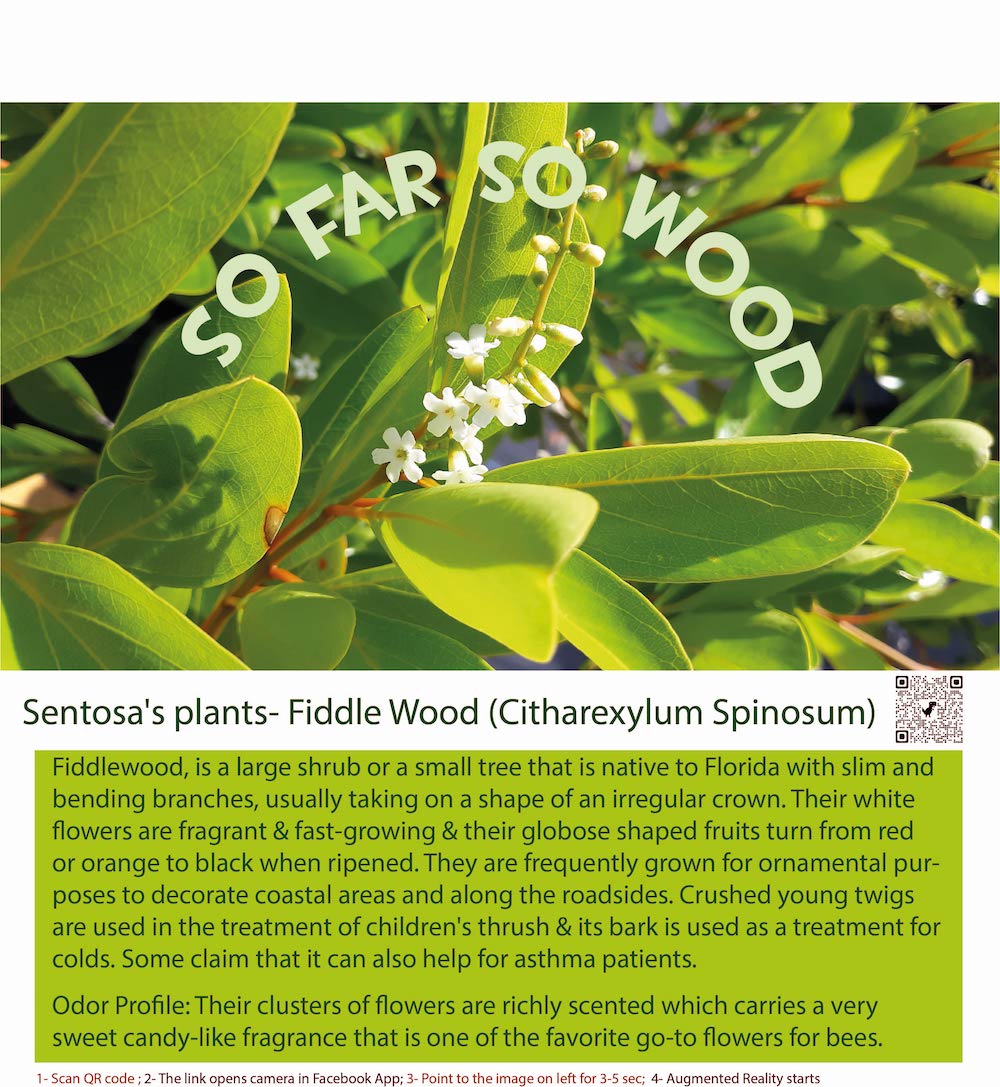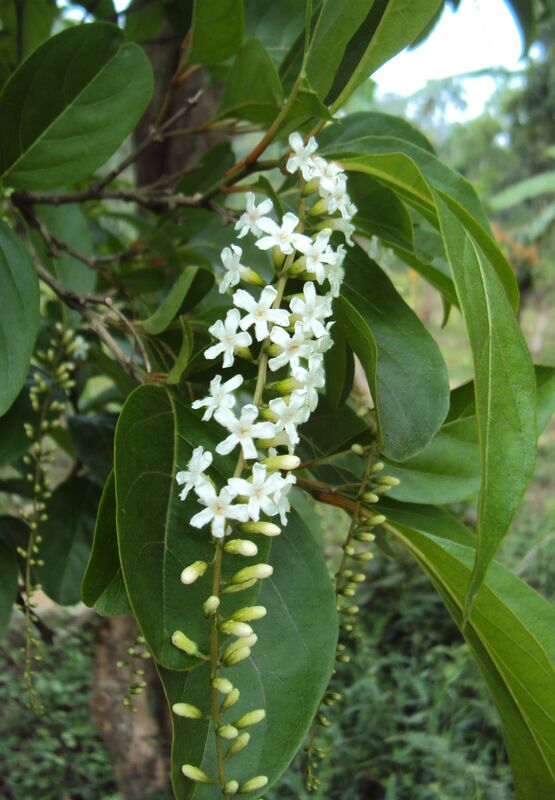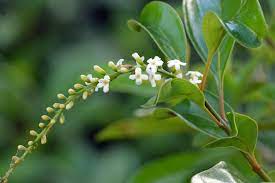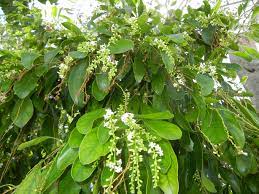Unveiling Fiddle Wood: A Fragrance Inspired by Sentosa's Botanical Treasures
The scent of Fiddle Wood, scientifically known as Citharexylum spinosum, is often described as delightful, fresh, and aromatic. The tree's leaves and flowers contain essential oils that emit a refreshing and pleasant fragrance. The aroma is commonly compared to a blend of floral and woody notes, creating a unique and captivating scent profile.
When the leaves of the Fiddle Wood tree are crushed or brushed against, they release their aromatic oils, filling the surrounding air with a sweet and slightly musky fragrance. The scent is known for its soothing and calming qualities, making it a favorite for aromatic purposes, such as in perfumes and fragrances.
The combination of the tree's distinctive fiddle-shaped leaves and its aromatic scent makes it a popular choice for landscaping and ornamental planting in gardens and public spaces. The fragrance adds an enchanting element to outdoor areas, attracting butterflies and other pollinators, further enhancing the natural beauty of the surroundings.
In addition to its aromatic qualities, the Fiddle Wood tree is also known for its traditional medicinal uses. Some traditional healers use parts of the tree, including the leaves and flowers, in herbal remedies to address various health concerns. The scent of the tree is believed to have therapeutic properties, contributing to its reputation as a beneficial plant in traditional medicine systems.
The Fiddle Wood tree's enchanting scent, along with its unique leaf shape and versatile applications, adds to its allure and cultural significance. Despite being lesser-known compared to some other aromatic trees, Fiddle Wood's refreshing fragrance and various uses make it a valued and cherished plant in the regions where it grows naturally.
As with all scents, individual experiences and perceptions may vary. Some may find the fragrance of Fiddle Wood to be uplifting and captivating, while others may have different interpretations based on their personal olfactory preferences. Regardless, the aromatic qualities of Fiddle Wood contribute to its overall appeal and make it a tree of interest in the realms of perfumery, traditional medicine, and landscaping.
When the leaves of the Fiddle Wood tree are crushed or brushed against, they release their aromatic oils, filling the surrounding air with a sweet and slightly musky fragrance. The scent is known for its soothing and calming qualities, making it a favorite for aromatic purposes, such as in perfumes and fragrances.
The combination of the tree's distinctive fiddle-shaped leaves and its aromatic scent makes it a popular choice for landscaping and ornamental planting in gardens and public spaces. The fragrance adds an enchanting element to outdoor areas, attracting butterflies and other pollinators, further enhancing the natural beauty of the surroundings.
In addition to its aromatic qualities, the Fiddle Wood tree is also known for its traditional medicinal uses. Some traditional healers use parts of the tree, including the leaves and flowers, in herbal remedies to address various health concerns. The scent of the tree is believed to have therapeutic properties, contributing to its reputation as a beneficial plant in traditional medicine systems.
The Fiddle Wood tree's enchanting scent, along with its unique leaf shape and versatile applications, adds to its allure and cultural significance. Despite being lesser-known compared to some other aromatic trees, Fiddle Wood's refreshing fragrance and various uses make it a valued and cherished plant in the regions where it grows naturally.
As with all scents, individual experiences and perceptions may vary. Some may find the fragrance of Fiddle Wood to be uplifting and captivating, while others may have different interpretations based on their personal olfactory preferences. Regardless, the aromatic qualities of Fiddle Wood contribute to its overall appeal and make it a tree of interest in the realms of perfumery, traditional medicine, and landscaping.
To experience augmented reality, please open the Facebook-app using QR code and point to the image below
Capturing Sentosa's Natural Beauty: Fiddle Wood Perfume Review
Fiddlewood is native to tropical America, A perennial tree, its flowers are like pendant and cover the tree from spring to fall. Foliage is dark green, shiny, ornamental. Flowers are very fragrant and can be used to make beautiful perfumes. The tiny flowers are a favourite to the bees.
Fiddlewood is a beautiful shrub or a small tree with long tassels of richly scented white flowers. Normally size of a shrub, Fiddlewood can grow to about 40 feet tall in its native habitat.
Fiddlewood (Citharexylum spinosum) is a small tree or shrub native to the Caribbean and Central and South America. It is also known by other common names such as Spiny Fiddlewood, Fiddlewood Tree, and Spiny Fiddlewood. It is a member of the verbena family. It typically grows to a height of around 20 to 30 feet, but can reach up to 40 feet tall. It has a dense canopy of glossy, dark green leaves, and produces clusters of small, white or pink flowers that are followed by purple or black berries. Fiddlewood is known for its unique, violin-shaped leaves, which give the tree its common name. The wood is hard and heavy and is used for making furniture and decorative items. The tree also has medicinal uses, with the bark and leaves being used to treat a variety of ailments such as fever and diarrhea.
Fiddlewood is a beautiful shrub or a small tree with long tassels of richly scented white flowers. Normally size of a shrub, Fiddlewood can grow to about 40 feet tall in its native habitat.
Fiddlewood (Citharexylum spinosum) is a small tree or shrub native to the Caribbean and Central and South America. It is also known by other common names such as Spiny Fiddlewood, Fiddlewood Tree, and Spiny Fiddlewood. It is a member of the verbena family. It typically grows to a height of around 20 to 30 feet, but can reach up to 40 feet tall. It has a dense canopy of glossy, dark green leaves, and produces clusters of small, white or pink flowers that are followed by purple or black berries. Fiddlewood is known for its unique, violin-shaped leaves, which give the tree its common name. The wood is hard and heavy and is used for making furniture and decorative items. The tree also has medicinal uses, with the bark and leaves being used to treat a variety of ailments such as fever and diarrhea.
Indulge in Luxury: Fiddle Wood Fragrance Available Now
The Fiddle Wood tree gets its name from its distinctive fiddle-shaped leaves. The leaves are bright green and glossy, resembling the shape of a fiddle or violin, with a wide body and a narrow neck. This characteristic leaf shape makes it easy to identify the Fiddle Wood tree in its natural habitat.
Fiddle Wood, scientifically known as Citharexylum spinosum, is a unique and intriguing tree with a fascinating history and an array of uses in various domains. This evergreen tree is native to the tropical and subtropical regions of the Americas, from the southeastern United States to Central and South America.
One of the notable features of the Fiddle Wood tree is its versatility in various applications. In the perfume and fragrance industry, the tree's leaves and flowers are often used to extract essential oils. These oils possess a delightful and refreshing scent, making them popular ingredients in perfumes and fragrances.
Beyond its aromatic uses, Fiddle Wood also finds application in traditional medicine systems. In certain regions where the tree is native, traditional healers utilize different parts of the tree for their medicinal properties. The bark, leaves, and flowers are believed to possess therapeutic qualities and are used to treat a range of ailments, including respiratory issues, skin conditions, and digestive disorders.
The Fiddle Wood tree also plays a significant role in landscaping and gardening. Its attractive foliage and unique leaf shape make it a popular choice for ornamental purposes, adding aesthetic appeal to gardens, parks, and public spaces. Moreover, the tree's ability to attract butterflies and other pollinators enhances the ecological value of green spaces where it is planted.
In addition to its practical uses, the Fiddle Wood tree has a rich history and cultural significance. It has been a part of the traditional knowledge and folklore of indigenous communities in the Americas for generations. The tree's unique shape and aromatic qualities have made it a subject of curiosity and admiration among local populations.
However, despite its various uses and cultural importance, the Fiddle Wood tree is not as widely known and studied as some other well-known tree species. As a result, there may still be untapped potential in its applications, both in traditional and modern contexts.
In conclusion, the Fiddle Wood tree is a fascinating and versatile plant with a remarkable history and an array of uses. From its fiddle-shaped leaves to its aromatic essential oils, this evergreen tree captures the imagination and curiosity of those who encounter it. Its contributions to the perfume and fragrance industry, traditional medicine systems, landscaping, and cultural heritage underscore its importance in various domains.
While the Fiddle Wood tree may not be as well-known as some other tree species, its unique characteristics and potential warrant further exploration and appreciation. As we continue to learn more about the diverse flora that surrounds us, we can gain a deeper understanding of the natural world's beauty and potential contributions to our well-being and cultural heritage.
Fiddle Wood, scientifically known as Citharexylum spinosum, is a unique and intriguing tree with a fascinating history and an array of uses in various domains. This evergreen tree is native to the tropical and subtropical regions of the Americas, from the southeastern United States to Central and South America.
One of the notable features of the Fiddle Wood tree is its versatility in various applications. In the perfume and fragrance industry, the tree's leaves and flowers are often used to extract essential oils. These oils possess a delightful and refreshing scent, making them popular ingredients in perfumes and fragrances.
Beyond its aromatic uses, Fiddle Wood also finds application in traditional medicine systems. In certain regions where the tree is native, traditional healers utilize different parts of the tree for their medicinal properties. The bark, leaves, and flowers are believed to possess therapeutic qualities and are used to treat a range of ailments, including respiratory issues, skin conditions, and digestive disorders.
The Fiddle Wood tree also plays a significant role in landscaping and gardening. Its attractive foliage and unique leaf shape make it a popular choice for ornamental purposes, adding aesthetic appeal to gardens, parks, and public spaces. Moreover, the tree's ability to attract butterflies and other pollinators enhances the ecological value of green spaces where it is planted.
In addition to its practical uses, the Fiddle Wood tree has a rich history and cultural significance. It has been a part of the traditional knowledge and folklore of indigenous communities in the Americas for generations. The tree's unique shape and aromatic qualities have made it a subject of curiosity and admiration among local populations.
However, despite its various uses and cultural importance, the Fiddle Wood tree is not as widely known and studied as some other well-known tree species. As a result, there may still be untapped potential in its applications, both in traditional and modern contexts.
In conclusion, the Fiddle Wood tree is a fascinating and versatile plant with a remarkable history and an array of uses. From its fiddle-shaped leaves to its aromatic essential oils, this evergreen tree captures the imagination and curiosity of those who encounter it. Its contributions to the perfume and fragrance industry, traditional medicine systems, landscaping, and cultural heritage underscore its importance in various domains.
While the Fiddle Wood tree may not be as well-known as some other tree species, its unique characteristics and potential warrant further exploration and appreciation. As we continue to learn more about the diverse flora that surrounds us, we can gain a deeper understanding of the natural world's beauty and potential contributions to our well-being and cultural heritage.
Crafting the Enchanting Aroma of Sentosa in Fiddle Wood
Fiddlewood makes a nice garden tree and can be planted in the shade of pines or other tall trees. Young plants are upright and rounded; older specimens develop a rounded vase form with lower branches removed.
Here are a few fun facts about Fiddlewood (Citharexylum spinosum):
Here are a few fun facts about Fiddlewood (Citharexylum spinosum):
- The leaves of the Fiddlewood tree are unique in that they are violin-shaped, hence the tree's common name.
- The flowers of the Fiddlewood tree are small, white or pink, and are arranged in clusters. They have a sweet fragrance that attracts butterflies and hummingbirds.
- The Fiddlewood tree produces purple or black berries that are edible, but not often consumed due to their small size.
- The wood of the Fiddlewood tree is hard and heavy, and is used for making furniture and decorative items.
- The bark and leaves of the Fiddlewood tree have medicinal properties and are used to treat a variety of ailments such as fever and diarrhea.
- The Fiddlewood tree is known for its tolerance to salt and drought, making it a popular choice for landscaping in coastal areas.
- The Fiddlewood tree is a fast-grower and can reach up to 40 feet tall.
- The Fiddlewood tree is native to the Caribbean and Central and South America, it is also known as Spiny Fiddlewood, Fiddlewood Tree, and Spiny Fiddlewood.
- The Fiddlewood tree is a popular ornamental tree due to its glossy, dark green leaves and its showy clusters of white or pink flowers.
- The Fiddlewood tree is also used for hedges and as a barrier tree, because of its thorny branches.
Fiddlewood adapts to a wide range of soil pH including alkaline. Moderate salt tolerance allows planting near the beach. The wood of this tree is said to be useful for making musical instruments - that could be the reason for its common name, fiddlewood
Fiddlewood (Citharexylum spinosum) tree is known for its sweet fragrance of the flowers which attract butterflies and hummingbirds, but it is not known if the tree itself has a distinct scent. Trees and plants release volatile compounds, known as volatile organic compounds (VOCs), which can have a distinct smell, but not all VOCs are pleasant or even noticeable to human. For example, some species may emit a strong, pungent smell, while others may release a more subtle scent. Without more specific information, it's hard to determine if Fiddlewood tree have a specific scent.
Fiddlewood (Citharexylum spinosum) tree is known for its sweet fragrance of the flowers which attract butterflies and hummingbirds, but it is not known if the tree itself has a distinct scent. Trees and plants release volatile compounds, known as volatile organic compounds (VOCs), which can have a distinct smell, but not all VOCs are pleasant or even noticeable to human. For example, some species may emit a strong, pungent smell, while others may release a more subtle scent. Without more specific information, it's hard to determine if Fiddlewood tree have a specific scent.
Discovering Fiddle Wood Fragrance Notes: A Symphony of Scents
Fiddlewood (Citharexylum spinosum) has been used in traditional medicine for its therapeutic properties. The bark and leaves of the tree have been used to treat a variety of ailments such as:
- Fever: The bark and leaves of the tree have been used to reduce fever and to treat fever-related symptoms such as headache, muscle aches, and fatigue.
- Diarrhea: The bark and leaves have been used to treat diarrhea by helping to reduce inflammation and promoting healthy digestion.
- Pain: The bark and leaves have been used to reduce pain and inflammation, making it a natural remedy for conditions such as arthritis and rheumatism.
- Wounds: The bark and leaves have been used to promote healing of wounds and to prevent infection.
- Cough: The bark and leaves have been used to treat cough and other respiratory conditions.
- Digestive problems: The bark and leaves have been used to treat digestive problems such as stomach aches, indigestion, and constipation.
Join Scentopia, Sentosa's latest tourist attraction wonderful orchid scent crafting, fragrance tour, bridal shower or corporate team building which includes perfume making onsite and offsite, beach activities and more. We also serve primary school learning journey, secondary students and pupil on industrial excursions. Know more about our orchids perfume bar or therapeutic orchid scents and other wellness aromas. Conatct Perfume workshop or book a scent crafting session here.




